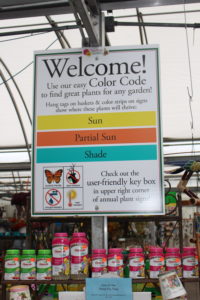Coming Clean — Or Greenwashing?
With all the talk about sustainability and the increased sales of green products, many in our industry are asking, “Why aren’t we getting more attention? After all, we are the original green industry!” As consumers become more savvy and cynical, some might caution, “Be careful what you ask for.” Making successful green marketing claims, it seems, is harder than it looks.
Greenwashing
TerraChoice, an environmental marketing firm, released a report last December highlighting the rise in “greenwashing,” presenting consumers with false or misleading statements about a company’s environmental practices or the benefits of their products and services. Looking at 1,018 consumer products from six major big box stores which made a total of 1,753 environmental claims only one came through completely clean.
But are these little green lies really a big problem? “Greenwashing may create cynicism and doubt about all environmental claims,” according to TerraChoice. “Consumers particularly those who care most about real environmental progress may give up on marketers and manufacturers, and give up on the hope that their spending might be put to good use.” In other words, consumers who feel as if their trust has been violated may just throw up their hands and give up trying to figure out who is making a difference and who’s just trying to make a buck. The concern is not unfounded.
Green Is On the Rise
Consumer interest in environmentalism is at a 20-year high, driven by global warming and catalyzed by Al Gore’s An Inconvenient Truth. That interest is translating into purchases. Mintel, a Chicago-based market research firm, reports that consumer spending on natural foods, vitamins, body-care and cleaning products grew by 28 percent, to $22 billion, between 2004 and 2006. The 2008 Green Gap Survey by Cone LLC and the Boston College Center for Corporate Citizenship recently released findings that almost four out of every 10 consumers are preferentially buying products they believe to be environmentally friendly.
Marketers are responding to this demand with an increase in new product introductions and “green” product claims. Mintel reports that new consumer product launches involving green claims have shot up from five in 2002, to 328 in 2007. At the same time, complaints filed against green marketing claims quadrupled between 2006 and 2007, according to Britain’s consumer-marketing watchdog agency, the Advertising Standards Authority (ASA).
Back stateside, the U.S. Federal Trade Commission (FTC) has initiated the process of revising its green marketing standards, the “Green Guides,” for the first time since 1998. According to the FTC, “There has been a significant increase in the use of environmental claims in product marketing, including ‘green’ claims concerning product packaging.” This update is also driven by the new marketing terms not currently addressed in the Green Guides, including terms such as sustainable and renewable.
This looks all too familiar.
History Repeats Itself
The late 1980s and early ’90s saw a major boom in environmental awareness. Fueled by concerns surrounding the hole in the ozone layer and medical waste washing up on the Jersey shore, 100 million people worldwide celebrated the 20th anniversary of Earth Day in 1990. Marketers jumped in with both feet to capitalize on this heightened eco-consciousness. “Green [marketing] claims quadrupled between 1989 and 1990. Trash bags and diapers were touted as “degradable” and hairsprays were branded “ozone friendly.” “One product label even claimed ‘Earth-friendly since 1889,'” writes green marketing consultant Jacquelyn Ottman.
Ilana DeBare writes in a San Francisco Chronicle article: “In the 1980s, companies were making so many misleading and confusing environmental claims that the Federal Trade Commission drafted a set of green marketing guidelines that were released in 1992.” However, the FTC did not seriously pursue enforcement of its own guidelines, contributing to the decline in consumer interest.
With today’s consumer interest, green marketing claims and regulatory attention mirroring that of the late ’80s and early ’90s, where does that leave our faith in corporate America? The Green Gap Survey found that of the 1,080 adults surveyed, only about half said they trusted companies to be truthful with their environmental marketing and believe companies are presenting information about their impact on the earth. Almost 60 percent would like to see more government regulation of green claims to ensure they are accurate.
“This is what absolutely terrifies me: Greenwashing killed the movement in the 1980s,” says TerraChoice Vice President Scot Case. “Green products were all the rage, but the volume of greenwashing created so much cynicism that people walked away.”
Footprints in the Carbon
Which brings us back to the fundamental question: Should our industry be capitalizing on green consumption? It seems natural that we, purveyors of all these oxygen-producing, carbon-reducing plants, would want to get in on the game. You might be tempted to take out ads or put up signs saying we are the original green industry, defenders of the environment and purveyors of natural air filters. You might want to be careful.
British supermarket giant Tesco recently announced it would begin labeling 20 of its products with a number showing the greenhouse gas emissions per serving. However, according to Reuters, Tesco won’t put a timetable on rolling out the initiative further across its product range of tens of thousands of goods, partly because of the complexity of measuring emissions. What makes them so complex is that these “seed-to-store” measurements are impacted by factors as wide ranging as how farmers till their soil.
Orange juice, one of the 20 newly labeled products, starts at the farm. You have to account for every spray treatment, harvesting and transporting the harvest through processing the oranges into the juice you drink with breakfast. Then you start reviewing the packaging, beginning with the managed forests where the trees were grown to make the cardboard container. As you can see, things get complicated fast.
How about containerized plants? Not only do you need to calculate the air-filtering benefit of the plant a positive you have to measure the manufacturing of the container and the plastic it is made of. Now factor in the fertilizer used to grow it and the manufacturing of that fertilizer, not to mention trucking it to the nursery. Finally, you have to transport the plant to your garden center. Is the benefit still positive? Eventually, but you can’t call it carbon neutral or beneficial until you measure the payback period first.
What’s a Green Garden Center to Do?
Here’s the bottom line: When you make green marketing claims, you risk losing the carefully cultivated trust you have with your customers. And you risk regulatory action. On the other hand, the market demand for sustainable goods and services is too compelling a business opportunity to ignore.
First, let’s look at what not to say. The most obvious cases of greenwashing arise from claims that are either patently false or cannot be verified. Several more subtle risks were identified by TerraChoice.
They found the most common cause of consumer confusion to be products or services that promote something good while ignoring something equally bad or even worse. For example, if a grocery store in Minneapolis were to promote organically grown tomatoes but failed to mention that they were flown in from Southeast Asia. Another risk is marketing something as a sustainable improvement when it is really just the lesser of two evils. For instance, marketing Malathion as the new sustainable alternative to DDT for treating aphids, when insecticidal soap will do the job just fine.
So what should you do?
Be consistent and transparent. In our world of high-volume marketing, your customers can smell a rat a mile away. If you are claiming to be green based on a single pallet of corn gluten out back or a couple of cases of insecticidal soap, your customers will cry foul. On the other hand, you don’t need to get rid of all chemicals in order to claim a sustainable focus. Be up front and let your customers know that, when appropriate, you will recommend an organic option. Otherwise, you want to make sure the solution you sell them will work.
Help make a real difference. There is a reason that energy-efficient light bulbs have caught on. You can easily and relatively inexpensively make a real and measurable difference. Choosing achillea over astilbe for poor, sandy soil in full sun makes a real difference in reducing water and fertilization needs. So does adding organic compost to the garden as an alternative to 10-10-10.
Back it up. Look for third-party verification of claims made by the products you sell. Look for international certifications like Green Seal, or approval by your state or regional organic farming association. While your customers trust you, they are being trained to look for a third-party seal of approval whether they are buying organic beef, recycled plastic or sustainably forested and printed paper.
As a small business, you have worked hard to earn your customers’ trust. A quick leap onto the green bandwagon isn’t worth sacrificing that for. Deliberate, careful marketing claims, grounded in serving your customers’ needs, will help you capitalize on consumer interest in sustainable goods and services and avoid the pitfalls of greenwashing. Now get out there and sell some corn gluten!

















 Videos
Videos





